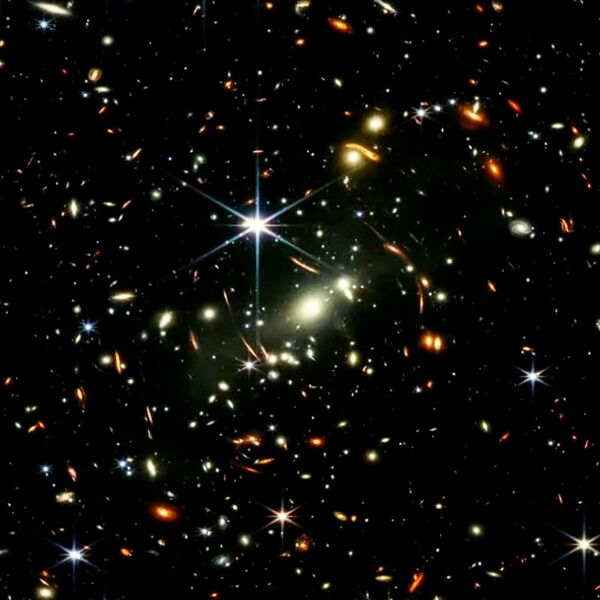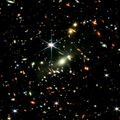File:Webb 1.jpeg

Original file (800 × 800 pixels, file size: 74 KB, MIME type: image/jpeg)
Image credit: NASA, ESA, CSA, and STScI
Adventuring out and beyond
- The first Webb image is released by NASA today, 7/11/2022
“This is the oldest documented light in the history of the universe from 13 billion — let me say that again, 13 billion — years ago,” Biden said, introducing the highest-resolution images yet of the infrared universe.
~ President Joe Biden unveiled this image of galaxy cluster SMACS 0723, known as Webb’s First Deep Field, during a White House event Monday, July 11
~ Webb’s image covers a patch of sky approximately the size of a grain of sand held at arm’s length by someone on the ground – and reveals thousands of galaxies in a tiny sliver of vast universe
~ Webb’s sharp near-infrared view brought out faint structures in extremely distant galaxies, offering the most detailed view of the early universe to date
~ NASA and its partners will release the full series of Webb’s first full-color images and data, known as spectra, Tuesday, July 12, during a live NASA TV broadcast
○
NASA’s James Webb Space Telescope has produced the deepest and sharpest infrared image of the distant universe to date. Known as Webb’s First Deep Field, this image of galaxy cluster SMACS 0723 is overflowing with detail.
Thousands of galaxies – including the faintest objects ever observed in the infrared – have appeared in Webb’s view for the first time. This slice of the vast universe covers a patch of sky approximately the size of a grain of sand held at arm’s length by someone on the ground.
This deep field, taken by Webb’s Near-Infrared Camera (NIRCam), is a composite made from images at different wavelengths, totaling 12.5 hours – achieving depths at infrared wavelengths beyond the Hubble Space Telescope’s deepest fields, which took weeks.
The first in a series of images shows the galaxy cluster SMACS 0723 as it appeared 4.6 billion years ago. The combined mass of this galaxy cluster acts as a gravitational lens, magnifying much more distant galaxies behind it. Webb’s NIRCam has brought those distant galaxies into sharp focus – they have tiny, faint structures that have never been seen before, including star clusters and diffuse features. Researchers will soon begin to learn more about the galaxies’ masses, ages, histories, and compositions, as Webb seeks the earliest galaxies in the universe.
○
File history
Click on a date/time to view the file as it appeared at that time.
| Date/Time | Thumbnail | Dimensions | User | Comment | |
|---|---|---|---|---|---|
| current | 22:45, 11 July 2022 |  | 800 × 800 (74 KB) | Siterunner (talk | contribs) |
You cannot overwrite this file.
File usage
The following 2 pages use this file: